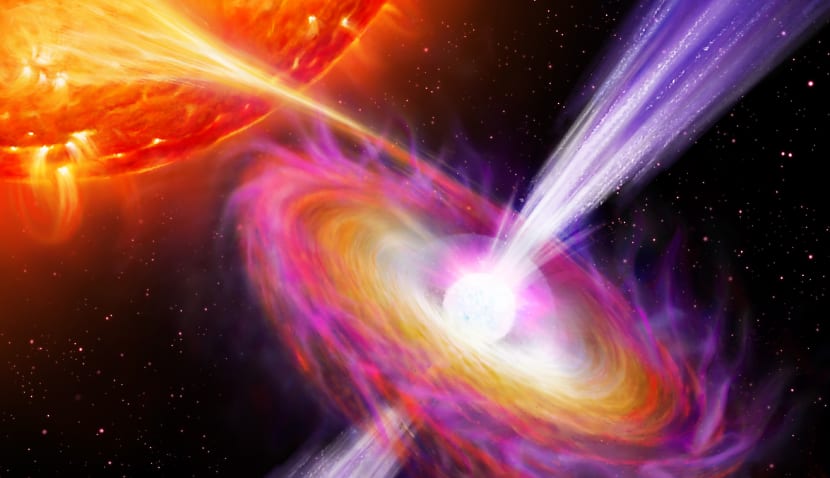The international team timed the mysterious phenomenon like a “100-metre sprinter” to record that it travelled at 114,000 kilometres per second – one-third the speed of light.
The study also used the ESA’s orbiting telescope, Integral, the first space observatory to simultaneously observe objects in gamma rays, X-rays, and visible light.
Neutron stars are the collapsed cores of massive stars that have exploded as supernovae. They are incredibly dense, with the mass of the sun squeezed into a sphere about 20 kilometres across.
They also have extremely strong magnetic fields and huge gravitational pulls.
“When pulling matter from a nearby star, their extreme environments cause the occasional thermonuclear explosion and constant jets of matter shooting into space,” said CSIRO, which operates ATCA.
“Not much is known about these jets, including their composition and speed.
“These latest results, published today in Nature, revealed that thermonuclear explosions – detected by Integral – pushed gas into the jets.
“The jets were then tracked with ATCA, allowing their speed to be recorded.”
Professor James Miller-Jones from the Curtin University node of the International Centre for Radio Astronomy Research (ICRAR) in Perth was one of the project researchers.
He said it’s generally difficult to measure the speed of a jet, but discovering they are enhanced after every thermonuclear explosion provides a new way of recording how fast they are travelling.
“The explosion tells us when the enhanced jets were launched, and we simply time them as they move downstream – just like we would time a 100-metre sprinter as they move between the starting blocks and the finish line,” Miller-Jones said.
The ATCA at the Paul Wild Observatory is an array of six 22-metre antennas used for radio astronomy.
Located 25 kilometres west of the town of Narrabri, in north NSW, it opened in 1988 and is used by 100 observing teams yearly.
“Radio telescopes are extremely versatile in the research they can do,” said Dr Jamie Stevens, who leads the ATCA operations team.
“Five of ATCA’s six dishes, for instance, take on different configurations by moving along a track. It can be used to look at everything from nearby objects in our galaxy to some of the most distant objects in the universe.
“The sensitivity and stability of ATCA allowed this research team to observe rapid changes in the neutron star’s surroundings over three days.
“This new method will help astronomers to better understand jets in many different environments and the complex events that build our universe.”
It comes after Space Connect reported last month how a robot assistant on the ISS will soon be able to create 3D maps of its surroundings after an Australian-designed upgrade was delivered to the orbiting laboratory.
The CSIRO payload will allow the free-flying Astrobee robots to keep track of inventory around the station and assist astronauts and mission controllers in planning activities.
If successful, it’s hoped the tech could one day help robots perform caretaker operations autonomously and even scan the outside of space stations.

Adam Thorn
Adam is a journalist who has worked for more than 40 prestigious media brands in the UK and Australia. Since 2005, his varied career has included stints as a reporter, copy editor, feature writer and editor for publications as diverse as Fleet Street newspaper The Sunday Times, fashion bible Jones, media and marketing website Mumbrella as well as lifestyle magazines such as GQ, Woman’s Weekly, Men’s Health and Loaded. He joined Momentum Media in early 2020 and currently writes for Australian Aviation and World of Aviation.

